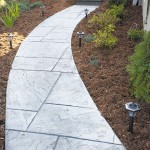Spruce up the garden
I’ve tried many times to plant — and maintain — a garden. I’ve tried different herbs, succulents, flowers and other plants that have been said to require little watering, fer-tilizing and care in general. But what I’ve found is that as the attention required for a plant goes down, so do the chances I’ll remember to care for them when it’s needed.
On the flip side, plants that require more attention like daily watering, occasional pruning and regular fertilizing, also tend to die out. I get into the habit of taking good care of them and even enlist the help of friends if I’m out of town. It never fails — once my routine is broken, it is nearly impossible for me to get it back. It seems as though I’m just not a plant person.
But the good news is that I’ve found other ways of “prettying” up our backyard without risking the death of innocent plants and flowers. If you have a not-so-green thumb, consider these non-living options for decorating your outdoor space:
• Garden ornaments. Strategically placed décor, such as lanterns or colorful spheres, can draw the eye to otherwise overlooked spaces. Think just like you do when you decorate a Christmas tree. Place ornaments around your yard in subtle places and be careful not to overdo it.
• Mirrors. A tried-and-true trick for making small spaces seem larger, mirrors don’t have to be reserved just for the indoors. Opt for mirrors framed with a material that can either create patina or that won’t be susceptible to rust.
• Water features. Pleasing to both the eyes and the ears, a water feature can be made with just a few items at a relatively low cost. Many garden centers have premade water features ready to be installed, or better yet, many will help you to create a custom feature all your own.
• Stepping stones. Creating a pathway through your yard, even if it’s a small one, adds subtle visual interest and also helps to prevent guests from trampling your grass. If you’re handy, you can do this yourself. Just remember that you’ll have to dig out the grass beneath each stone so that it can sit flush with the ground. Once you have the hole dug, pour builder’s sand to help even out the area. Then, lay the stone down. If you’re unsure of utilities underground, or if you feel uncomfortable doing this on your own, consult a professional.
Have a comment or question for Joanne? Email thefixisinhawaii@gmail.com.




